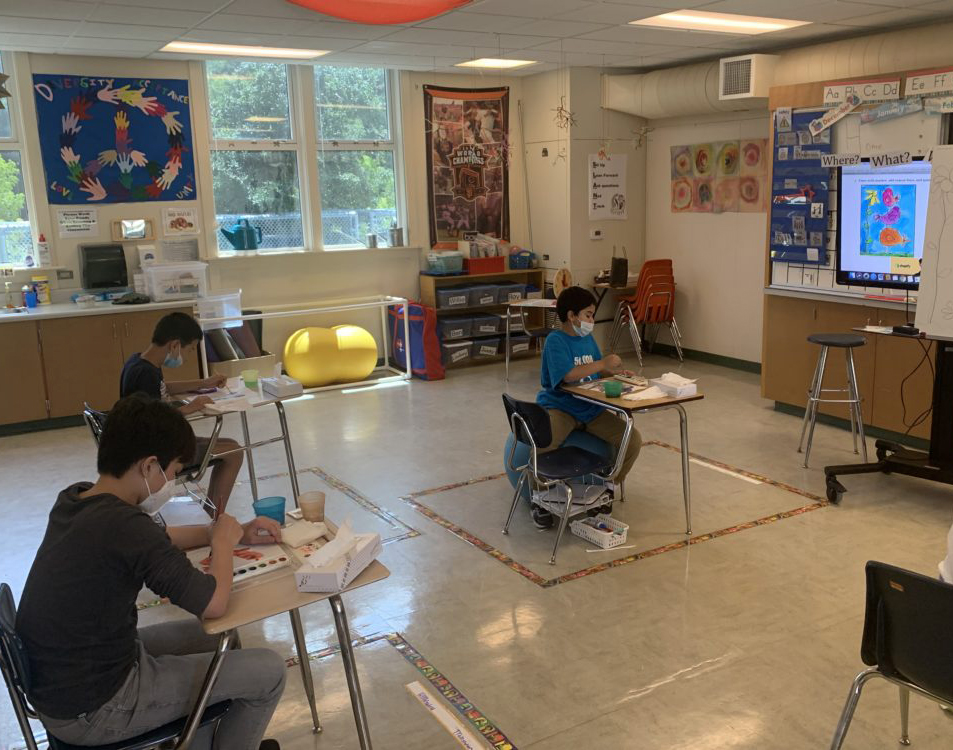
It was a gathering – yes, a gathering – we’d anticipated since the first days of the province-wide shutdown back in March. Monday night, we entertained half of the family – one daughter and her three sons – at dinner on our back porch. We actually sat together at the table. And we hugged the grandkids for the first time in four months. It felt wonderful. But the next morning, as we smiled in the afterglow, my wife observed:
“You know, once they’re back at school, we’re going to have to be extra careful.”
It didn’t register immediately. How much more careful would we have to be? While more fortunate than most, since our nuclear family members all live close by, we’ve only enjoyed their company periodically and from afar. One or the other daughter, with her children, has dropped by every few days. The kids have run around in our backyard, while we adults have sat outside in a physically-distanced circle.
We’ve not touched any of them, nor they us. They’ve not stepped into our house, nor we into theirs. We’ve shared no food, until the other night. We’ve made the best of that “quality time” to be a family.
Extra careful? Then, I did a little research and based on a bit of reading, I thought I might share what my wife implied by being extra careful. First, it appears that the Ministry of Education is considering three back-to-school Scenarios:
A) All students back to normal school days;
B) A blended-learning system, with students ideally in 15-pupil classes on alternative days or alternative weeks doing both in-class work and remote learning at home; and…
C) all students taught online.
Let’s save a bit time here and take Scenario C right off the table. I’m not the only observer, with either scientific or anecdotal evidence, to trash that system months ago (“Online or out-of-line” Barris Beat, Jan. 16, 2020). And any discussions with parents or teachers I’ve had since the lockdown have illustrated in spades that remote learning is a long way from teaching children anything, much less replacing in-class, face-to face contact with professional teachers. Period.
Let me offer some thoughts on Scenario B, the blended system of online and in-class. For the record, the Durham District School Board has surveyed the region’s parents and learned as many as a third of Durham Region parents will not send their children back to school this fall. So, for better or worse, DDSB schools might be dealing with only two-thirds back in class this fall; that’s 47,000 students instead of 70,000 (broken down further, two-thirds of elementary attendance is 30,000 pupils and 16,000 high school students back in school).
Even reduced, these numbers mean that the parents of 30,000 kids will have to find care for their children on alternate days or weeks. First, right now there isn’t the day-care capacity. Second, all the logisticians in the world can’t compute their way out of the cost to parents seeking alternate day/week arrangements for their children, not to mention the re-scheduling nightmare. The result, as I indicated in my July 9 column, will shut more women out of work and certainly blunt the recovery.
Then there’s the practical sociology of Scenario B. So, children go to class, say, on Monday and Wednesday and Friday; they take their contact with classmates (and their parents and siblings) to day care Tuesday and Thursday and mix with the children of parents and siblings from the other side of the blend. Then, they bring that contact back to the original cohort. And, all of a sudden, we have multiplied contact by a factor of three, at least.
In other words, instead of containing potential spread of COVID-19 to a class of 15 students, teachers and their families, Scenario B has broadcast it to the other cohort’s students, siblings, parents, teachers and day cares … and returned the favour. Again, I’m no scientist, but that plan doesn’t appear very safe to me.
Finally, let’s look at Scenario A, which is what everyone would love to see. At the outset, I don’t see full classrooms as they were before the pandemic until health experts produce a successful vaccine. Next, with class sizes reduced to 15 (the apparent optimum), that means schools finding additional space – in gyms, cafeterias, libraries and even schoolyards (during clement weather this fall) – not to mention the funds for additional teachers, teaching assistants, janitorial staff and personal protective equipment, may prove insurmountable.
A number of MPPs have asked quite appropriately: “Where’s the funding? Where’s the planning?”
On its tentative calendar, the DDSB says the first day of elementary school classes this fall is Tuesday, Sept. 8. That leaves the provincial government 47 days to transform its daily TV photo-ops to specifics on safe schooling. Whatever scenario the premier and education minister choose, my wife’s right. We’ll still have to be extra careful.